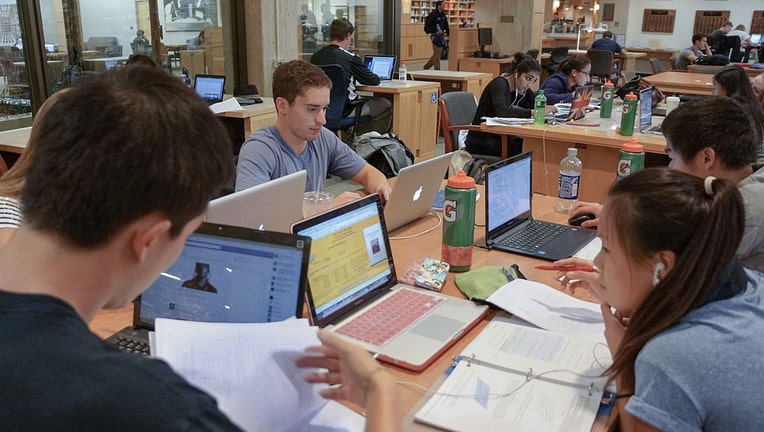Study finds lower grades given to students with surnames later in alphabetical order

FILE-College students sit together while studying in the Milton S Eisenhower Library at Johns Hopkins University. (Photo by JHU Sheridan Libraries/Gado/Getty Images).
A new study shows that a student receiving a good or bad grade isn’t solely based on their academic performance but judged on their last name.
Students with last names near the end of the alphabet received lower grades, while those whose names started with a letter at the beginning of the list received a higher grade.
Researchers at the University of Michigan discovered that students with surnames starting with A, B, C, D, or E received a 0.3-point higher grade out of 100 possible points. But scholars with later-in-the-alphabet last names received a 0.3-point lower grade—creating a 0.6-point gap, the study explains.
RELATED: Most US adults say don't ban race in college admissions but role should be small: AP-NORC poll
The team evaluated over 30 million grading records from the students at the school, with alphabetically lower-ranked names receiving lower grades.
They also gathered data on all programs, students, and assignments on Canvas from the fall 2014 semester to the summer 2022 semester.
Canvas is a widely used online learning management system tool with a default setting that lists students by their last names alphabetically.
RELATED: History, civics scores for US students declined amid pandemic
"We spend a lot of time thinking about how to make the grading fair and accurate but even for me it was really surprising," Jun Li, an associate professor of technology and operations at U-M’s Ross School of Business, said in a statement in the report. Li co-authored the study with doctoral students Jiaxin Pei from U-M’s School of Information and Helen (Zhihan) Wang from Ross.
Researchers explain in their report that an option does exist to grade assignments in a random order, which some educators do, but in alphabetical order is the default mode in Canvas and other online learning management tools.
A simple fix, the team suggests, would be to modify the default settings in grading systems to make the order in which students appear more random.
The group noted universities could hire more graders for larger classes, spread the work between more individuals, and train graders to be aware of biases.
This story was reported from Washington, D.C.

